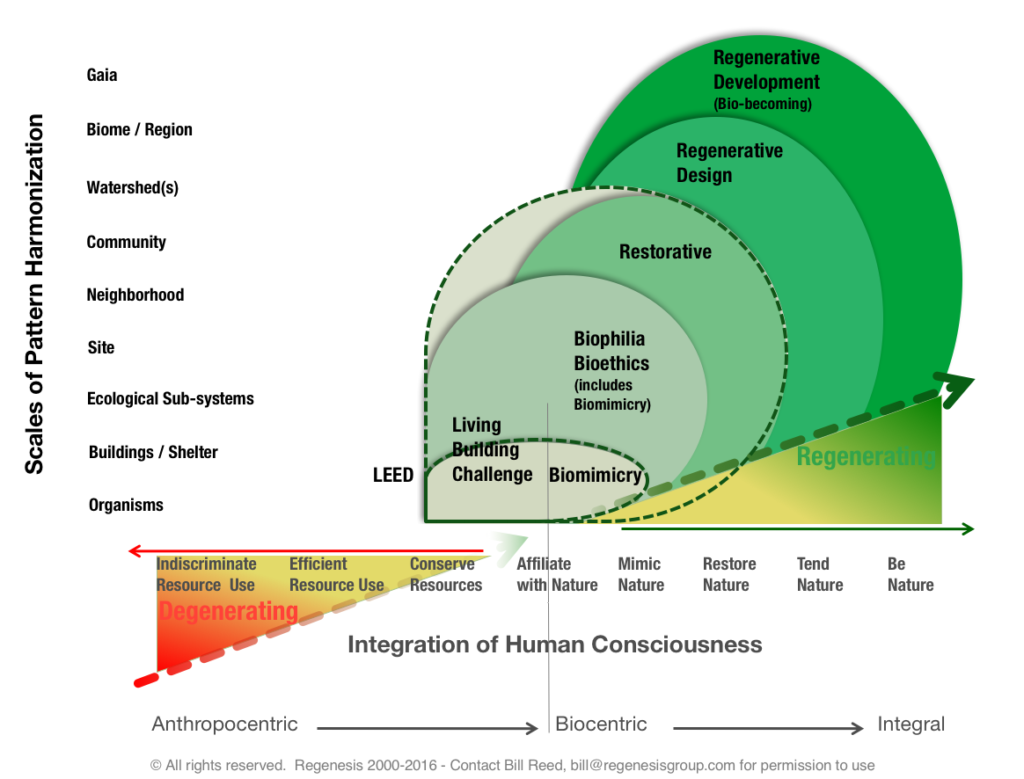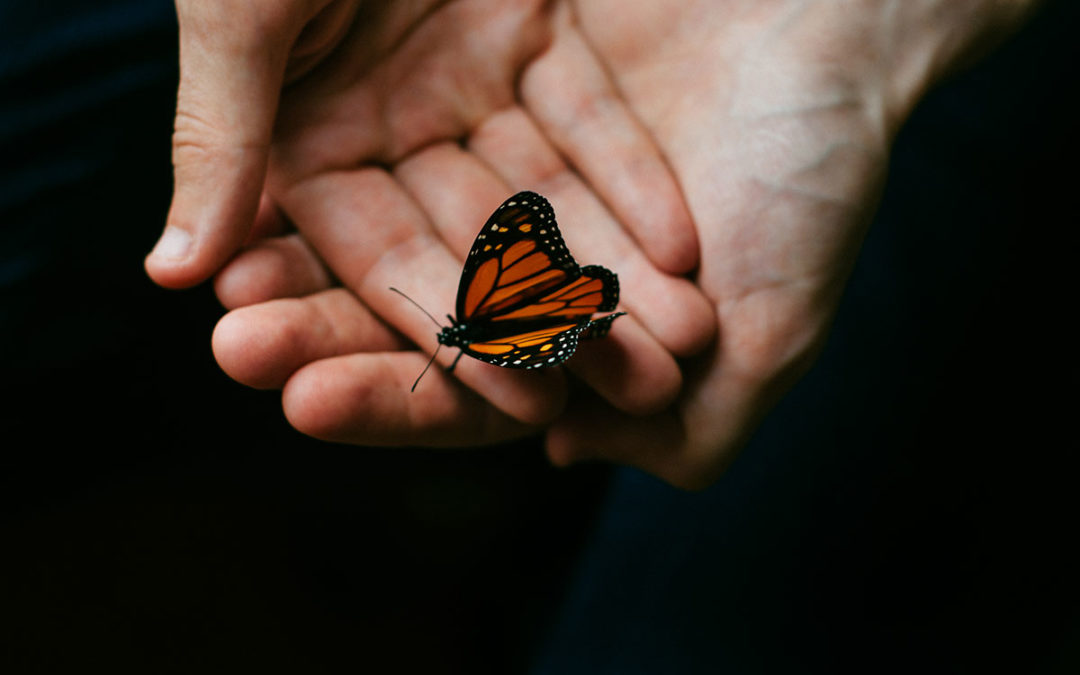by Daniel Christian Wahl
Most of humanity has lost a vital connection with the natural world – a connection that, from our species’ origins until recently, informed and sustained our participation in nature. The scientific and industrial revolutions brought us almost miraculous technological progress and solved many problems, but they also propagated a mindset where progress meant substituting the old with the new. We came to favor widely-applicable technological solutions over place-based bio-cultural wisdom, and to value short-term gratification over the art of the long view. Eventually we came to think of ourselves and of culture as being somehow separate from or even independent of nature.
With 7.4 billion of us facing a common destiny of dangerous run-away climate change, environmental degradation, and the depletion of non-renewable resources, we are at last beginning to pay attention to the scientific fact that we are biological organisms. The cultures we co-create are emergent properties – epiphenomena – of life and of nature. We are intricately interwoven with the bio-geo-physical processes that sustain life on Earth.
Our common future critically depends on all of us – rapidly – understanding biomimicry’s central lesson. Janine Benyus put this golden rule for regenerative cultures succinctly and clearly: “Life creates conditions conducive to life.” Taking this insight to heart means nothing less than accepting the challenge to “redesign the human presence on Earth,” as David Orr has put it.
We need to collaborate globally, regionally, and locally at an unprecedented scale to create “elegant solutions carefully adapted the the uniqueness of place” (John Todd). To do so, we need to do more than just learn from nature, we need to design as nature, and that means changing the human impact on Earth from being predominantly degenerative to being regenerative.
Join the Regeneration!
The bad news – as you probably know – we only have at most a couple of decades to learn to co-create this regenerative human impact at a planetary scale. The good news is that the Regeneration is already on the rise. What Fritjof Capra and Pier Luigi Luisi describe as the systems view of life is beginning to guide our participation in nature.
Building on the visionary work of John T. Lyle and many others, Bill Reed and the team at Regenesis have developed a coherent design framework for regenerative development. It describes the progressive integration of deeper levels of learning from nature, to the imitation, restoration and tending of nature. There is a step-change in our effectiveness as we shift our perception towards participation, and we become fully conscious again of the fact that we are nature and as such, capable of design as nature.
I believe that this reconciliatory step of acknowledging our participatory agency in the complexity of nature is absolutely crucial if we hope to create a regenerative human presence on planet Earth. Whether you call it biomimicry, ecological design, permaculture, green chemistry, industrial ecology, or creating a circular economy, if you are engaged in any of these fields, chances are you are already contributing to the rise of the Regeneration and the redesign of the human presence on Earth.
 To simply design for sustainability is no longer enough, we need to design for regeneration! Collectively, as a species, we have already done too much damage to simply aim for sustainability – what William McDonough calls “100% less bad.” We have to undo the damage done over centuries – in some cases over millennia. We have to regenerate healthy ecosystems functions everywhere. To be able to do this well, we have to become good at designing as nature.
To simply design for sustainability is no longer enough, we need to design for regeneration! Collectively, as a species, we have already done too much damage to simply aim for sustainability – what William McDonough calls “100% less bad.” We have to undo the damage done over centuries – in some cases over millennia. We have to regenerate healthy ecosystems functions everywhere. To be able to do this well, we have to become good at designing as nature.
Here is a short video explaining of how the regenerative design framework describes a continuum of moving from business-as-usual to green, sustainable, restorative, reconciliatory, and on to regenerative design practice:
As life, we can create conditions conducive to life
Since the Renaissance and the remarkable period of innovation that followed, we have more than once thrown out the baby with the bathwater, and declared vital wisdom as “primitive” – blinded by the enticements of technological progress. We should have paid more attention to the ancient guiding wisdom of place-based cultures that co-evolved in intimate reciprocity with the bio-cultural uniqueness of their bioregions.
Many biomimics today are still indirectly perpetuating the entirely mind-made divide between humanity and nature by the way they use language to describe their work. The boom in design and technology inspired by nature is – for the most part – still undertaken within a mindset that is based on learning from nature. It is time to recognize that we are nature. We will have to re-indigenize to fit our human cultures into the life-sustaining ecosystem functions of the places and regions we inhabit.
Culture does not have to be divorced from or in competition with the rest of nature. The human impact on Earth does not have to be predominantly degenerative. We can create diverse regenerative cultures together.
All our daily actions – and our failures to act – are interventions in the socio-ecological systems we participate in. Our common future emerges to a large extent out of the why, how, and what we design. As biological organisms, we participate in and can consciously contribute to the way that life creates conditions conducive to life.
This participatory worldview is both relatively new in science (second order science) and very ancient. We are moving towards a synthesis of ancient indigenous wisdom and modern science. Most indigenous cultures share a participatory awareness of nature as the ground of our being.
I believe that learning from traditional indigenous wisdom – or Traditional Ecological Knowledge (TEK) – is an important aspect of biomimicry practice. Once we overcome the false dualism and mind-made separation of nature and culture we can more fully meet the challenge to redesign the human presence on Earth.
As we move towards a synthesis of ancient wisdom and modern scientific and technological capabilities, we can become good at designing regenerative cultures. Among the many lessons we can learn from indigenous cultures around the world are:
- The understanding that the world is alive and meaningful and our relationship with the rest of life is one of participation, communion, and co-creation.
- The practice of accessing the collective intelligence of community through modes of communication that involve deep listening and sharing from the heart in a council circle.
- The insight that the rest of the natural world is in continuous communication with us if we only learn to listen.
Humanity is facing a collective rite of passage as we cease to be an immature, juvenile species and are becoming mature, responsible members of the community of life. As culturally creative members of the Regeneration, we have to learn to emulate life’s central pattern of creating conditions conducive to life. By humbly designing as nature we can attempt to move towards sustainable participation in nature and begin to contribute to the emergence of diverse regenerative cultures everywhere.
About the author:
Dr. Daniel Christian Wahl is an international consultant and educator specialized in biologically inspired whole systems design and transformative innovation. He is a biologist (University of Edinburgh & University of California), holds an MSc in Holistic Science (Schumacher College), and a PhD in Design (CSND, University of Dundee, 2006). Daniel is a member of the International Futures Forum, a fellow of the Royal Society of the Arts (FRSA), co-founder of Biomimicry Iberia, and co-organized two European Bioneers conferences in 2010. Daniel currently works for Gaia Education and the SMART UIB project of the Universidad de las Islas Balears. After publishing academic papers and articles on biomimicry and ecological design since 2003, he published his first book on Designing Regenerative Cultures in 2016 with Triarchy Press in the UK. Twitter: @DrDCWahl Website: www.danielchristianwahl.com

